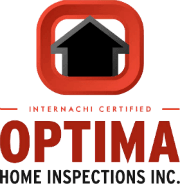When it comes to home inspections, ensuring the safety and health of the environment is a top priority. One essential aspect often overlooked is VOC testing. Volatile Organic Compounds (VOCs) are chemicals that can evaporate into the air and affect indoor air quality. Here’s why VOC testing should be a critical part of any home inspection.
1. Understanding the Hidden Dangers
VOCs can be found in a range of household products, from paint to cleaning agents. Identifying these compounds during inspections helps reveal potential health risks that aren’t immediately visible. For example, formaldehyde is a common VOC found in many building materials and furniture. Long-term exposure to such compounds has been linked to respiratory issues and even cancer, making it crucial to identify and address them early on. Knowing where these VOCs originate allows homeowners to take proactive steps in eliminating or minimizing their impact.
An often overlooked source of VOCs is personal care products. Many perfumes, shampoos, and skin lotions emit VOCs that accumulate inside the home. By conducting VOC testing, you can determine which products are potentially harmful and adjust your household habits accordingly. It’s a simple yet effective way to reduce indoor pollutants and enhance your living space’s overall health.
2. Protecting Indoor Air Quality
Indoor air quality plays a significant role in overall health. VOC testing helps ensure that the air you breathe inside your home isn’t compromising your well-being. Poor air quality can lead to symptoms like headaches, dizziness, and fatigue, which are often mistaken for common ailments. By using VOC testing to pinpoint sources of air quality deterioration, you can take immediate action to improve it, leading to healthier living conditions.
Another crucial aspect is understanding how air circulation and HVAC systems affect VOC distribution within your home. Inspectors can provide guidance on improving ventilation, which is a significant component in reducing VOC levels. Simple actions like opening windows or using exhaust fans can significantly enhance air quality, transforming your home into a safe haven.
3. Financial Implications of VOC Presence
High VOC levels can lead to costly renovations. By detecting these early, you can avoid unwanted expenses and preserve your property’s value. Repairing surfaces damaged by VOCs, such as paint and flooring, often involves substantial financial investment. Not only do you have to pay for materials and labor, but the disruption to your daily life can be significant. Therefore, early detection through VOC testing is not just a health precaution but a wise financial decision.
4. Complying with Health and Safety Regulations
As health and safety standards evolve, VOC testing becomes increasingly important for compliance. It’s essential for staying up-to-date with regulations and avoiding potential legal issues. This is particularly urgent for landlords and property managers, who must ensure their properties meet the latest indoor air quality standards. Noncompliance could lead to fines or legal actions, jeopardizing your investment and reputation. Through regular VOC testing, you can confidently navigate the ever-changing landscape of health regulations, ensuring both safety and compliance.
5. Enhancing the Resale Value
Homes with documented VOC testing and air quality improvements are more attractive to buyers, knowing they’re investing in a safe environment. Furthermore, providing a history of VOC inspections and necessary upgrades can give you an edge in a competitive housing market. Buyers are increasingly aware of the importance of a healthy living space, and demonstrating your commitment to this can significantly increase your home’s marketability.
In addition to health benefits, a history of VOC testing can serve as a unique selling point. It reassures potential buyers that the property has been well-maintained and monitored, offering them peace of mind that is often invaluable in property transactions.
6. Understanding Long-Term Health Effects
Prolonged exposure to VOCs has been linked to serious health issues. Through regular testing, you can mitigate these risks and protect your long-term health. Conditions such as asthma, chronic respiratory illnesses, and even certain types of cancer have been associated with VOC exposure. Not only does testing protect against immediate health concerns, but it also serves as a preventive measure against long-term conditions that could severely impact your quality of life.
7. Supporting Green Living Initiatives
Incorporating VOC testing into home inspections supports eco-friendly living by identifying sources of pollution and enabling greener choices. By addressing VOC issues, homeowners can opt for more sustainable materials and products that are less harmful to the environment. This shift not only contributes to individual health but also aids in the global movement towards a more sustainable future.






